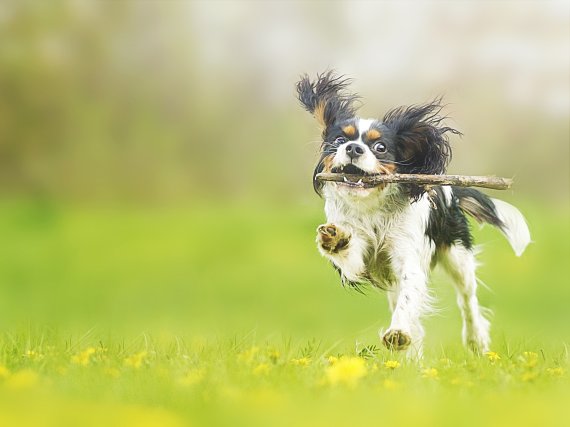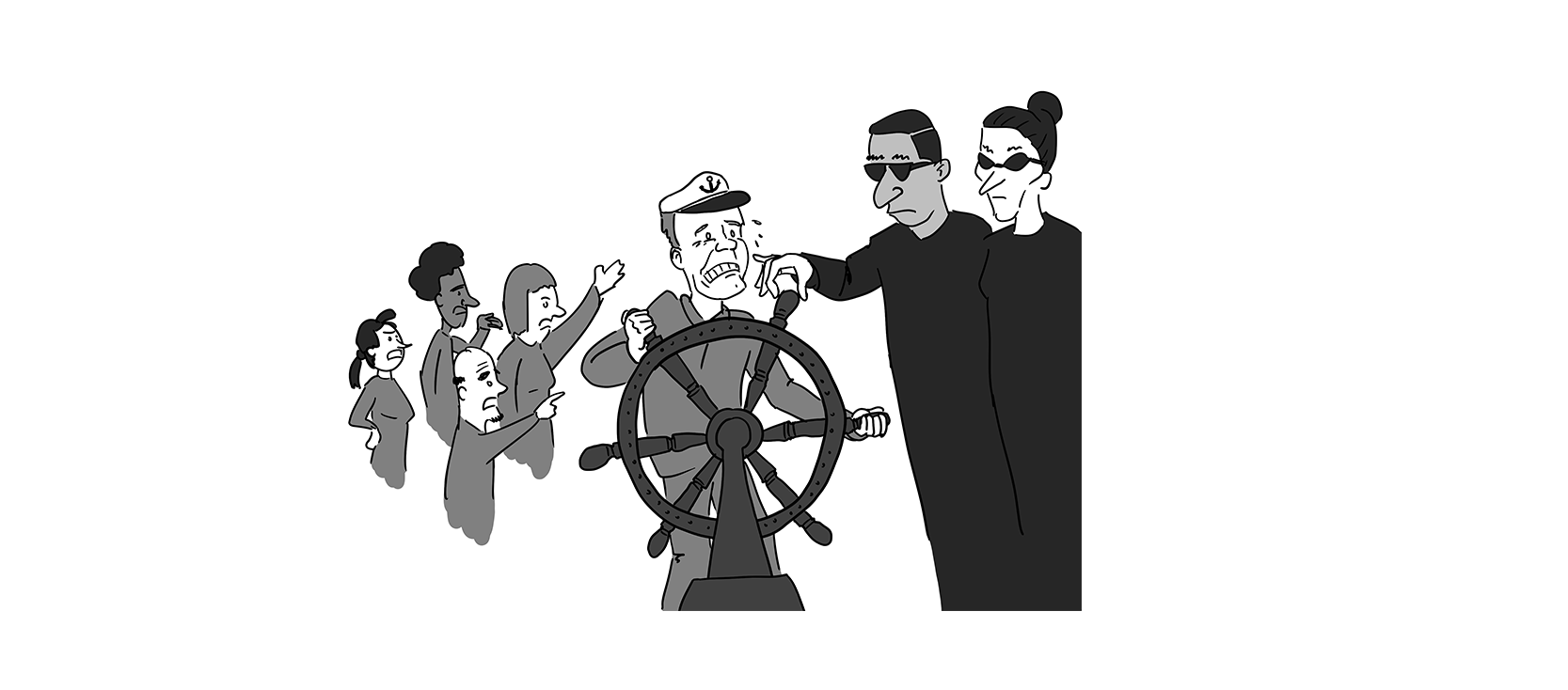If you want to be eco-friendly, you’d better not keep a pet, concluded Robert and Brenda Vale in their book Time to Eat the Dog? The real guide to sustainable living. The scientist couple from New Zeeland calculated the environmental impact of pets. If you must have an Alsatian dog, they claim, you’d better get rid of your car: its footprint is comparable.
Burden on land
Researcher Ferry Leenstra at Wageningen Livestock Research agrees that we shouldn’t forget pets when we aim at an eco-friendly lifestyle. ‘A vegetarian with a cat and a horse probably has a bigger ecological footprint than a meat-eater without these pets.’ Leenstra and her colleague Theun Vellinga calculated the ecological footprint of dogs, cats and horses in the Netherlands. ‘These pets are not normally eaten, unlike farm animals. But they place a burden on land and food, some of which is suitable for human consumption too.’ As an example: with the calories and protein required to feed all the world’s dogs and cats you could feed the entire population of Germany (about 80 million people).
The environmental burden of pets will only increase because their numbers are going up with
rising wealth. According to the last count by research bureau TNS NIPO, in 2015, there were about 2.6 million cats in the Netherlands, 1.5 million dogs and 450,000 horses. For comparison: in the same year, the Netherlands was home to nearly 4 million cows and more than 12 million pigs. Leenstra: ‘If you compare the ecological paw print of pets with that of farm animals, it is relatively small, but by no means negligible.’ Feed is the biggest factor in the paw print, says Leenstra. ‘Scientists are racking their brains to answer the question of how we can feed the growing world population in future. At the moment, pets are rarely brought into the discussion.’
1.5 million soccer fields
Leenstra calculated how much land is needed for pet food production. This amounts to about 1000 m2 per cat and twice that per dog. The average horse comes out at 3500 m2. By way of comparison: in wealthy countries, about 12,500 m2 of land is needed per person per year.
About 820,000 hectares of farmland is needed to feed all the dogs, cats and horses in the
Netherlands. That is almost half the two million hectares of farmland in the country. Leenstra: ‘We based this calculation for dogs and cats on average pet food contents and no food waste. And we also looked at meat and fish, products which can be eaten by people. If we had only included by-products, the land use would have come out lower.’
It is better to have a small pet like a hamster, that eats the waste from your vegetables’
This is because the calculation must take into account the extent to which the ingredients in pet food are considered by-products or as products suitable for human consumption too. By-products such as bones and innards have a lower footprint than products such as meat, which can be eaten by people and are therefore more valuable economically. The ecological paw print of dogs and cats is therefore partly determined by the contents of their feed.
Pet-lovers often argue that pets eat mainly slaughterhouse waste products that would otherwise be thrown out. There is some truth in this, says Leenstra. ‘But our analysis
also shows that many ingredients in commercial pet food could also be consumed by farm animals and possibly by people too.’
Chicken feet
Two thirds of the ‘by-products’ in tinned food belong to ‘category 3’, products that are suitable
for human consumption. Examples are tripe, offal or chicken feet. Leenstra: ‘We might not be very keen on all that in the Netherlands, but in many parts of the world these products are seen as delicacies. You can export chicken feet to China, where they are a delicacy. But with the prices we are prepared to pay for dog and cat food, it can be profitable for the meat industry to supply pet food producers.’ In the Netherlands, moreover, more animal by-products are needed than are produced by the meat industry.
There is also the fact, says Leenstra, that horses graze in meadows, and stables occupy land on which no food can be produced, but which would be suitable for the purpose. ‘Horses have a big impact, thanks to their numbers and their size; they need a lot of food and space. In the past, horses provided traction and transport, and then food. But that is not so popular nowadays.’
Poop
Pets not only compete with us for food and land, but their faeces and urine also contribute
to emissions of greenhouse gases such as methane, and therefore to our ecological footprint. ‘Precise figures are not known,’ says Leenstra. ‘But the contribution of pets is probably insignificant compared with that of farm animals.’ Horse manure is used to grow mushrooms on, but dog and cat poop doesn’t usually go in the compost bin but directly into the environment.
It is a difficult dilemma for environmentally aware animal-lovers. The answer may seem simple: no pets then. But that is a bit over the top, says Leenstra. Maybe we could look for a middle way, she suggests, in imitation of the growing number of flexitarians. ‘You could opt to have a pet on a timesharing basis. Or a small animal like a hamster or a rabbit, that doesn’t eat meat but the waste from your vegetables.’
What is meant by ecological footprint?
There is some confusion about the definition of ‘ecological footprint’. Simply put, a footprint is the amount of land needed to maintain a particular lifestyle. Ferry Leenstra of Wageningen Economic Research: ‘It is a way of indicating the effect of a product on the environment. A big part of it is the land or sea needed to produce the food. But other factors that are considered are the greenhouse gases emitted, the land used to live on and effects on air and water quality. All this is expressed in a hypothetical figure, representing a surface area, in square metres or hectares.’

 Foto Shutterstock
Foto Shutterstock 

![[Seriously?] Less is more](https://www.resource-online.nl/app/uploads/2025/10/36-WEB_DeNeus.png)